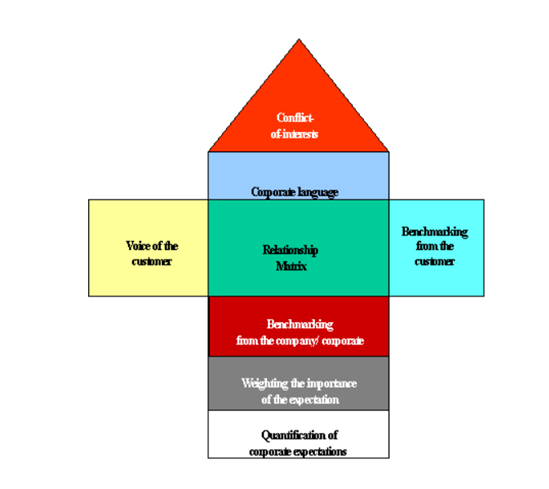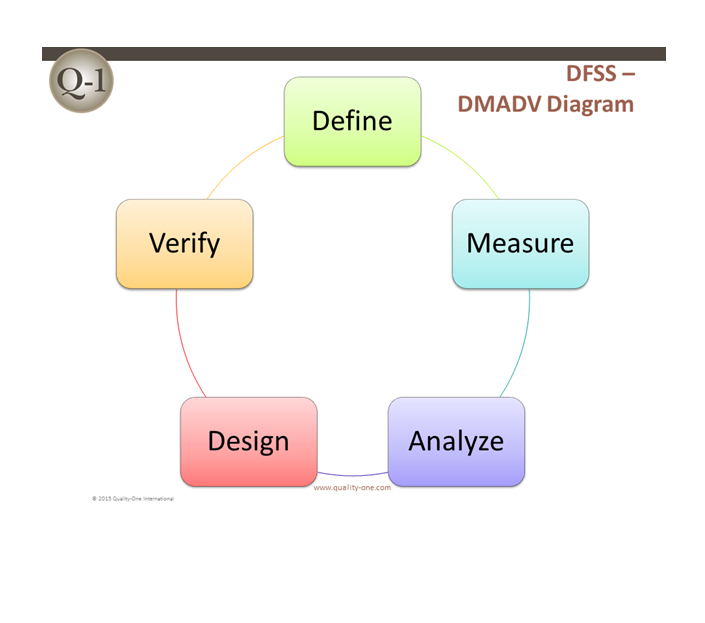Best Six sigma for supply chain management Assignment 2020
Topic One Questions – Six sigma for supply chain management
1. Describe the concept of Six Sigma for supply chain management
In the business environment, the term Six Sigma is very significant that is able to improve the cost benefits and quality benefits for the company. Basically, six sigma process is associated with the supply chain management. It helps the company to get the benefits in the term of the cost and quality. In the simple meaning, six sigma processes is an effective business process that is used to minimize the waste and use of the resources to improve the customers’ satisfaction level (Christopher, 2016). In this, special quality control and monitoring standards are developed in the business activity that aimed to reduce the cost of the company and improve the customers’ satisfaction level. The use of the six sigma in the supply chain management, companies focus on the set of the tool and techniques to overcome the defects from the product, service, and process. At the same time, six sigma techniques are also known as the total quality management technique that is developed by the Motorola in early to middle 1980 (Jacobs et al., 2014).
2. Describe two benefits of creating and using a QFD matrix
Important Planning Tool
Quality function deployment is an important tool for planning when a company has indented to launch a new product. With the help QFD, the product requirements are already determined and according to requirements, the product engineering team works on the technology of the product that is a planning process of the product development. It also includes the process planning that is effective to achieve the desired results. Hence, it can be said that QFD is an effective process to control and maintain the product (Tayur et al., 2012).
Improves Production Efficiency
QFD is also helpful to improve the production efficiency in the manufacturing process. It allows the company to maintain the product cost by concerning some effective manufacturing techniques. The process of saving the cost in the product is also helpful for the customers because it has to pay less on the buying the product (Carter and Liane Easton, 2011).
3. Describe each part of the QFD matrix and how a QFD matrix is created
The quality function deployment can be defined as the method and technique that is useful in improving the quality and customer satisfaction. In this process, the customers’ demand is concerned in designing the targets. Quality function deployment is a way of preparing the design and quality of the product that means it ensures about the design and quality issues.
- Conflict of interest
- Corporate language
- Relationship Matrix
- Voice of the customers
- Benchmarking from the company/ corporate
- Weighting the importance of the expectation
- Quantification of corporate expectations
- Voice of the customers
- Benchmarking from the customers

(Sarkis et al., 2011)
A process of the creation of the QFD matrix
- Product Planning QFD – In this process, the demand of the customers is analyzed. It is also helpful to analyze the market opportunities and target values.
- Component Deployment QFD – In this process, the responsible person analyzes the internal elements that will be used to meet the customer needs.
- Process Planning QFD – In this step, the product manager analyzes the needs of the operation process.
- Quality Control QFD – It is the last process of developing the QFD in which the specific control methods are developed and used (Monczka et al., 2015).
4. Describe the steps for benchmarking
Benchmarking is a significant process of measuring the performance of the company. It also provides comparisons between the firm performance and performance of identified best practices.
Following are the steps of for benchmarking
- Determine process of benchmark – In this step, the actual process of benchmarking is determined
- Organize the benchmarking effort – In this step, one or two people from each warehouse decide to visit the warehouse with a common goal to implement the effective strategy and practices
- Find a new team and project timeline – Under this step, the project manager hires the team and team members. After this, the project is provided the timeline and activities are divided into the different task
- Implementation – In this step, the actual benefits can be identified. In this, if the warehouse A provides the best result then same practices are applied in the other warehouses (Carvalho and Cruz-Machado, 2011).
5. Give brief descriptions of these Six Sigma tools and where they can be used;
Affinity diagram – It is a kind of analytical tool that is used to organize and manage the various idea and subgroups that are common objective and relationship.
Kano model – The Kano Model can be used to identify that customers’ need and it is a product development method. It is helpful to improve the level of the customers’ satisfaction.
Pareto analysis – It is one the most important tool of the Six Sigma. This tool is used to determine if the Pareto Principle applies. It is also used to identify the principle of the six sigma and how they can be used in the management (Diabat and Govindan, 2011).
Fishbone analysis – It is also known as cause and effect analysis. It is a structural tool that is used for brainstorming. This cause and effect diagram is used to determine the causes of organizational issues.
Process flow charts – This tool presents the graphical presentation of the overall activities in the operation process. This tool is used to presents the blueprint of all the steps, events, activities and process.
Failure mode analysis – Failure modes are used to analyze the causes of the failure and to identify affect the customers. It is also used to analyze the DMAIC (Seuring, 2013).
Design of experiment – It is also an effective method six sigma that is used to evaluate the relationship between the factors that affect the process and tt
Design of experiments (DOE) is a systematic method to determine the relationship between factors affecting a process and the output of that process.
6. DMAIC cycle, the final step can at times be overlooked
This stage in the DMAIC process is presented to ensure that the new controls and procedures have existed in the place. Control has hopes regarding the improvement in the further and it also develops the belief that problem will not arise in future.
7. Lean thinking generate process improvement and advantages of integrating
The main objective of integrating the lean with sigma is to bring the improvement in the business process. At the same time, the main benefit of integrating the lean with sigma is that it provides the advantage to the business in the references of the time, money and quality (Ahi and Searcy, 2013).
8. Why is it a good idea to create value stream process maps?
It is a good idea to create value stream process maps it is because is effective to analyze, examine, and improve the process of delivering the product and service. It is also a key of the lean methodology that is helpful to improve the overall performance of the business.
Topic Two questions – Design for six sigma for supply chain design
1. What is DFSS? What benefits does it hold for supply chain design and management?
DFSS is designed for the Six Sigma. DFSS is an acronym form of the Design For Six Sigma. It is very helpful in supply chain management. It is also helpful to meet the with customers requirements regarding the supply process of the company. It is also helpful in supply chain management to measure the output of the process (Barney, 2012).
2. Outline how you would redesign a supply chain process using DFSS
In order to redesign a supply chain process of the company some major steps are taken. In the first process, the aim and objective of the redesign are defined by the company. In the second process, the company focus on the customer needs and wants that is measured by the supply chain management process. In the third process as analyze, all the information and resources are analyzed to achieve the aim and objective. In the fourth step is the selection of the single design concept model and develop a 3D model. In this, all requirements are checked again. The fifth process is verified, in which all the activities and process are retested and verified. In this, it is also checked where a process is meeting with the business and customers needs or not (Hugos, 2018).

Topic three questions – Six Sigma applications in the supply chain
1. Key factors for implementing a successful six sigma program and challenges
Key factors
There are various key factors implementing successful six sigma program for supply chain management that are following:
Strong leadership and management commitment – To implement the six sigma at the workplace the leaders and management play an important role. They are planner and implementers of the change in the context of six sigma. A good support by the leaders and management is helping to motivate the employees for adopting the six sigma and design and quality implement.
Organizational infrastructure – In implementing the six sigma, various teams, and department have a great role so it is essential to have an effective organization infrastructure. At the same time, a good number of team members in the project also lead to successful implementation (Green Jr et al., 2012).
Culture change – To implement the six sigma effectively, there is a need that plan should according to the culture of the company. The management and company should motivate the employees for development and implement six sigma by regarding them.
Training- Training a significant factor in the implementation of Six Sigma program. The quality and effectiveness of the training determine the success of the six sigma at the workplace because it helps the employees learn each concept clearly.
Understanding on six sigma method, tools, and techniques – It is not possible to implement the Six Sigma without the proper knowledge of the Six Sigma tool, techniques and method (Brandenburg et al., 2014). A good knowledge of the Six Sigma tool, techniques and method help to understand each concept effectively and get success in the implementation process.
Challenges of the six sigma method
A company has to face the following issues and challenges while implementing the Six Sigma methods –
- Selection of effective and accurate methods, tools, techniques
- To determine the effective and accurate reason for adopting the six sigma
- The goals and objectives are not aligned with company vision and mission
- The infective process to start and implement the process
- The financial goals and budget are not clear
- The company has not properly and required resources
- Poor planning
- Not proper control and measure (Wisner et al., 2014)
2. Critically review and elaborate on one of the Six Sigma applications for logistics
How the projects are specified – The project is planned by an electric company that is operating the global business environment. This project is specific because it includes the application of the lean sigma framework to support the lean sigma in the service improvement.
What methods/approaches/tools are selected – The case study method is used with cross-case analyses. In this, the implementation of LSS in two internal logistics processes has also concerned.
Different phases of the application – Following phase are followed
- To set the goals and objective of the logistic process
- The selection of the design, method, and approach
- The analyses of the selected design, method and approach
- The practical implementation of the process
- The implementation of the control measure (Dekker et al., 2013)
How the improvement actions are implemented – In this project two processes are concerned to improvement by the implementer of the logistic process that is payment process and shipment process. The sufficient information collected and analyzed with the help of the LLS tool.
What particular benefits are gained from the application – The two main benefits are observed that are as improvement have been seen in the customers’ satisfaction level. Another benefit has been seen as flow time is declined due to LSS implementation.
What weakness you may have noted in the application approach – In this, it is implementation was based on the electrical company so that observation cannot be developed for whole industries. In additionally, CIPs have did not concern on the compete for DMAIC. (Dekker et al., 2013)
Topic four questions – SCOR and Six Sigma
1. Describe the SCOR model; include what needs it addresses and strengths and weakness
The SCOR is an acronym form of the supply chain operation reference model that is a management tool. It is useful to identify, improve, and overcome the issues in the chain process of the company. It is helpful to improve the overall performance of the company. The model determines the business processes. This model is used when there is a high need of the meeting with the customer needs. The consideration on this model helps in the supply chain management to how can be process improved.
Strengths
- SCOR model is effective to achieve the competitive advantage because it helps the company to identify, improve and overcome the issues from the supply chain process that improve the performance of the company (Ashby et al., 2012).
- It focuses on the designing performance measure where the unnecessary process is overlooked and it minimizes the time and cost of the company.
Weakness
- SCOR develops the competitive environment due to this companies have to provides the product at a low price to maintain the sales that lead to a decline in the profit.
- The process of the SCOR is very complex because it needs an effective planning, time, and skilled person that enhance the work of the company (Christopher, 2016).
2. Explain the SCOR Six Sigma (Lean) convergence, what does SCOR add to Six Sigma
In the business process, SCOR and six sigma both are linked with the supply chain management process. Six Sigma process is used to analyze customers’ needs and data to understand the market in a more effective way. At the same time, SCOR determines the flow and process of the supply chain in the management. To develop the supply chain model or process with processing, companies move for adopting the new technologies, model and tool that are effective to improve the supply chain process of the company. In regard to this, companies concern on the supply chain operation reference (SCOR) relates to sigma (Lean) (Jacobs et al., 2014). It is effective to integrate the overall business process in the common goal and objective. In this, it can be seen that demand and supply planning is possible by SCOR under the six sigma. It is also effective in preparing effective sourcing strategies and transformation processes. Example – In the competitive business environment, the use of the six sigma method is very useful to identify and analyse the needs and requirement of the customers during the deployment of SCOR method. In this, SCOR is developed to improve the order and delivery process (Monczka et al., 2015).
References
Ahi, P. and Searcy, C., 2013. A comparative literature analysis of definitions for green and sustainable supply chain management. Journal of cleaner production, 52, pp.329-341.
Ashby, A., Leat, M. and Hudson-Smith, M., 2012. Making connections: a review of supply chain management and sustainability literature. Supply Chain Management: An International Journal, 17(5), pp.497-516.
Barney, J.B., 2012. Purchasing, supply chain management and sustained competitive advantage: The relevance of resource‐based theory. Journal of supply chain management, 48(2), pp.3-6.
Brandenburg, M., Govindan, K., Sarkis, J. and Seuring, S., 2014. Quantitative models for sustainable supply chain management: Developments and directions. European Journal of Operational Research, 233(2), pp.299-312.
Carter, C.R. and Liane Easton, P., 2011. Sustainable supply chain management: evolution and future directions. International journal of physical distribution & logistics management, 41(1), pp.46-62.
Carvalho, H. and Cruz-Machado, V., 2011. Integrating lean, agile, resilience and green paradigms in supply chain management (LARG_SCM). In Supply chain management. InTech.
Christopher, M., 2016. Logistics & supply chain management. Pearson UK.
Dekker, R., Fleischmann, M., Inderfurth, K. and van Wassenhove, L.N. eds., 2013. Reverse logistics: quantitative models for closed-loop supply chains. Springer Science & Business Media.
Dekker, R., Fleischmann, M., Inderfurth, K. and van Wassenhove, L.N. eds., 2013. Reverse logistics: quantitative models for closed-loop supply chains. Springer Science & Business Media.
Diabat, A. and Govindan, K., 2011. An analysis of the drivers affecting the implementation of green supply chain management. Resources, Conservation and Recycling, 55(6), pp.659-667.
Green Jr, K.W., Zelbst, P.J., Meacham, J. and Bhadauria, V.S., 2012. Green supply chain management practices: impact on performance. Supply Chain Management: An International Journal, 17(3), pp.290-305.
Hugos, M.H., 2018. Essentials of supply chain management. John Wiley & Sons.
Jacobs, F.R., Chase, R.B. and Lummus, R.R., 2014. Operations and supply chain management (pp. 533-535). New York, NY: McGraw-Hill/Irwin.
Monczka, R.M., Handfield, R.B., Giunipero, L.C. and Patterson, J.L., 2015. Purchasing and supply chain management. Cengage Learning.
Sarkis, J., Zhu, Q. and Lai, K.H., 2011. An organizational theoretic review of green supply chain management literature. International Journal of Production Economics, 130(1), pp.1-15.
Seuring, S., 2013. A review of modeling approaches for sustainable supply chain management. Decision support systems, 54(4), pp.1513-1520.
Tayur, S., Ganeshan, R. and Magazine, M. eds., 2012. Quantitative models for supply chain management (Vol. 17). Springer Science & Business Media.
Wisner, J.D., Tan, K.C. and Leong, G.K., 2014. Principles of supply chain management: A balanced approach. Cengage Learning.


